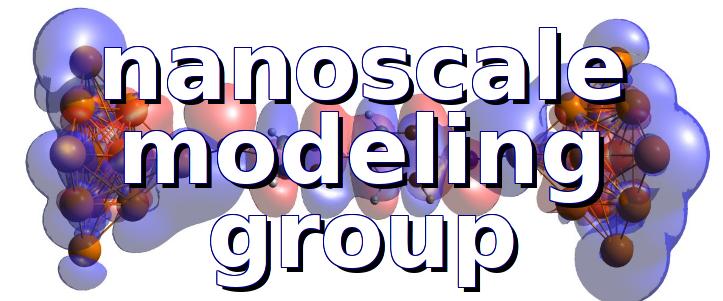Nanoscale Modeling Group, Chair Materials Science and Nanotechnology, TU Dresden
Theoretical and Computational Quantum Transport (Nano & Materials)
Quantum transport at nanoscale • Quantum materials • Nanoscale devices • Multiscale computational platform
OLD SITE
Below are our research fields and some results (click to make larger).
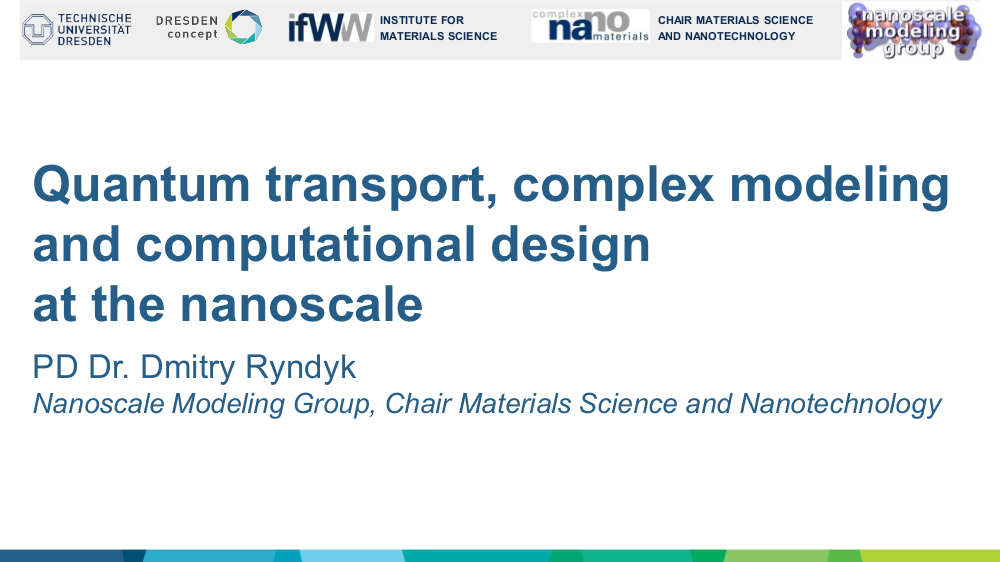
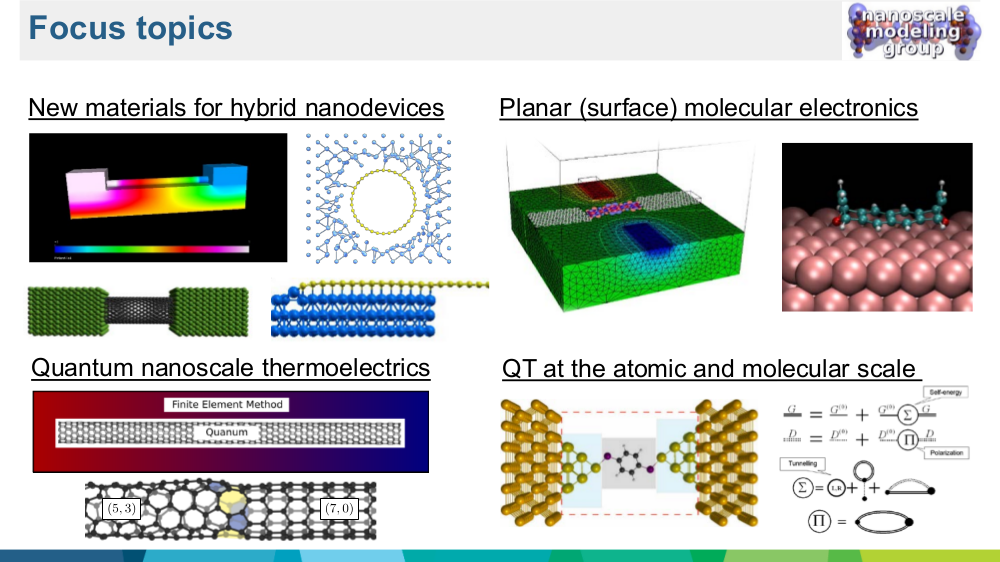
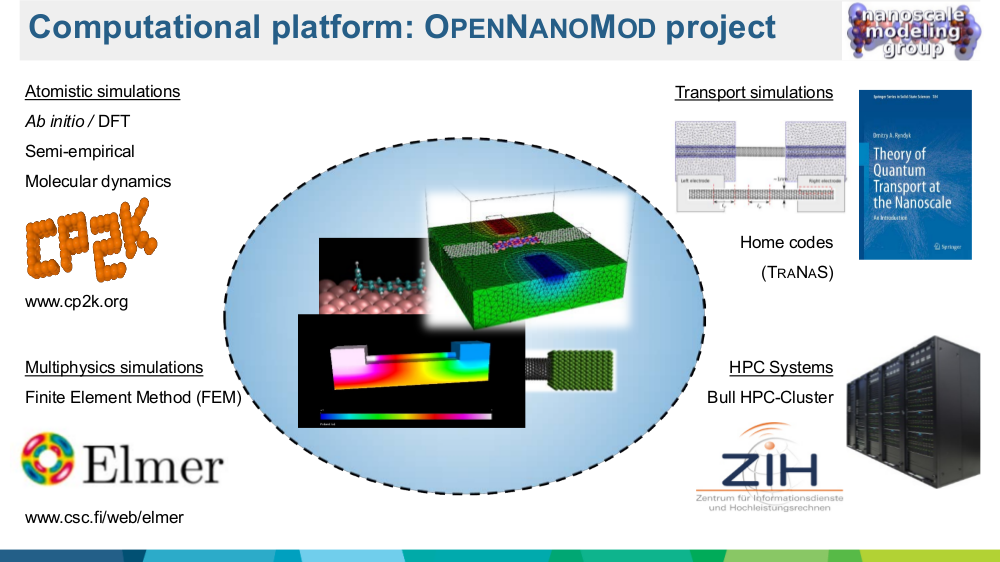
Theory of quantum transport at the atomic and molecular scale
The challenge for molecular transport theory is to combine an ab initio approach, required to take into account a realistic geometry and capable to provide the electronic structure of molecular junctions, with a many-body quantum transport technique, which is necessary to incorporate the correlation effects and consider the Coulomb blockade, polaron memory, switching, Kondo effect. We suggested recently the many-body localized molecular orbital approach. The main building blocks of this approach are an effective electron model (an orthonormal basis of localized molecular orbitals and a many-body Hamiltonian in this basis) extracted from atomistic calculations, and a nonequilibrium quantum transport method, based on nonequilibrium Green functions or on the quantum master equation.
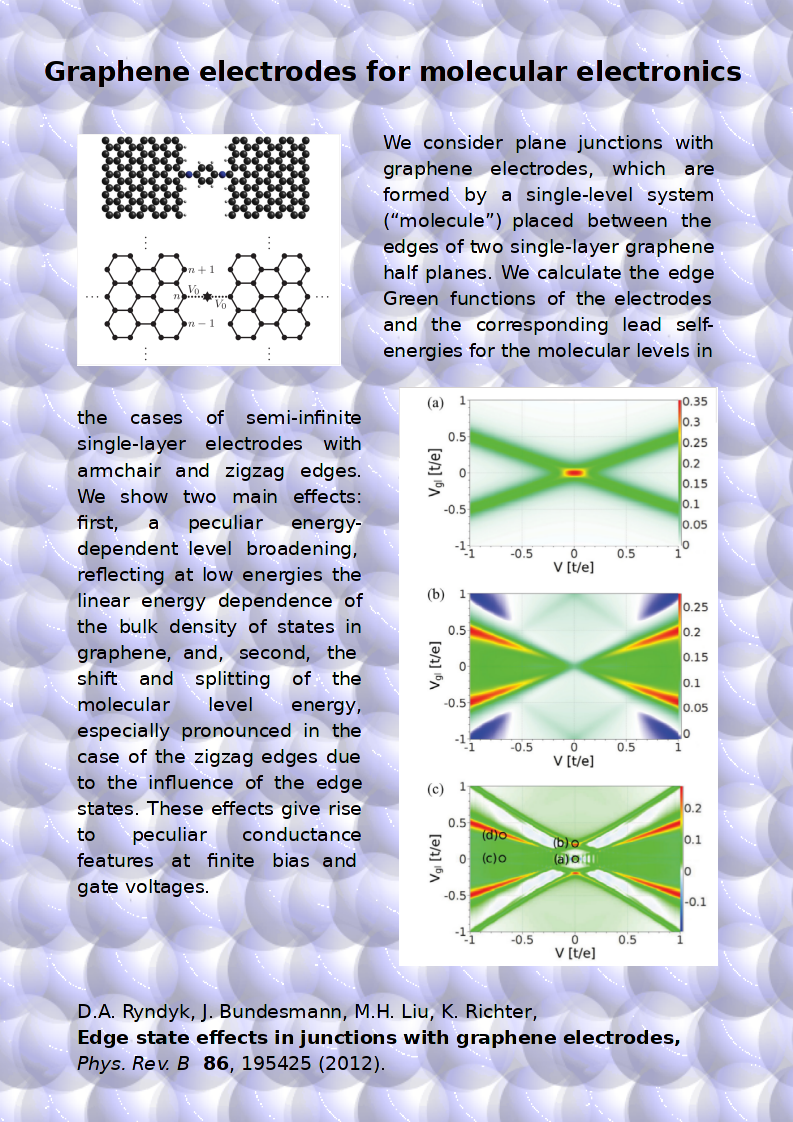
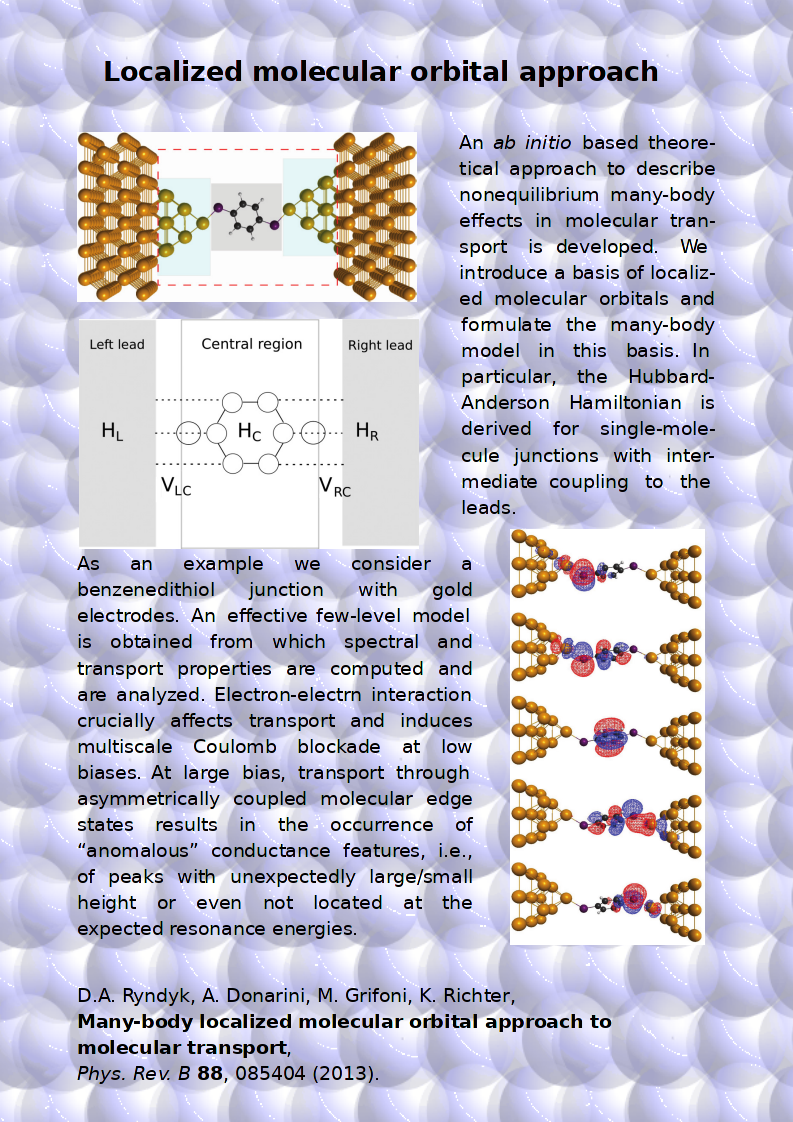
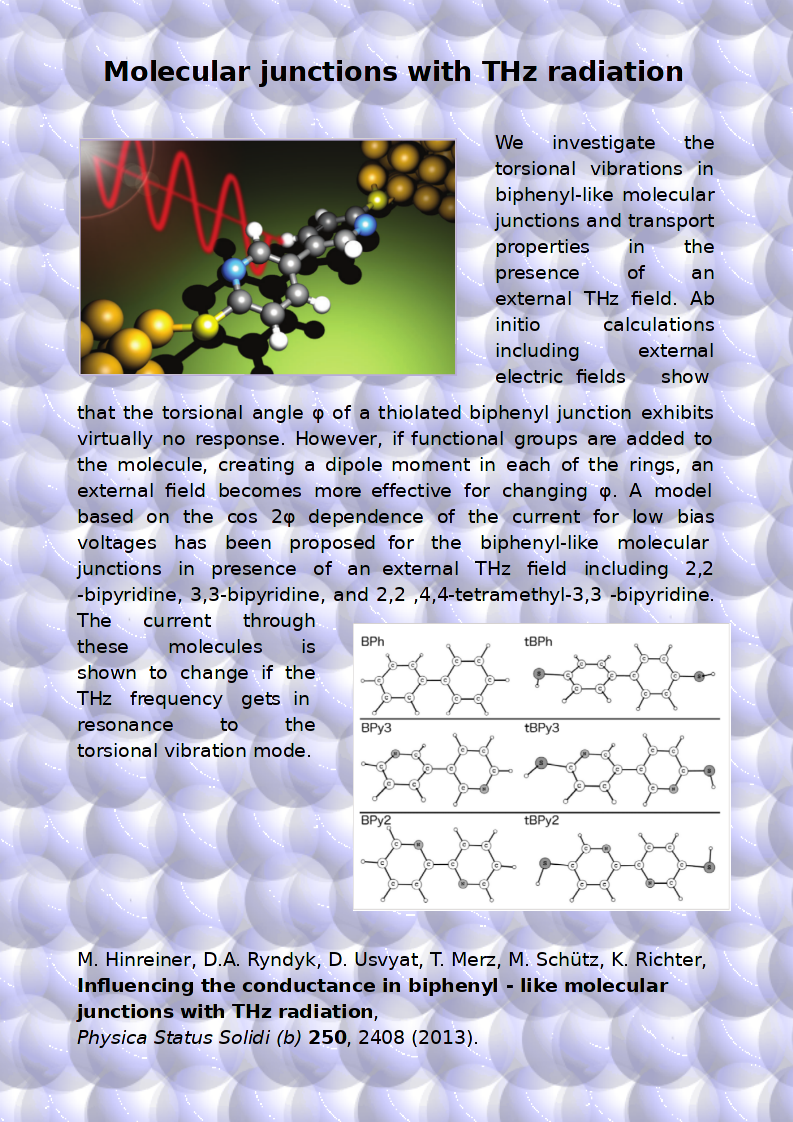
New materials for hybrid nanodevices
Following nanocarbons (graphene and nanotubes), new families of low-D materials come into play: MoS2, BN and
other. While the physical properties of these materials are very interesting itself, we focus on engineering of hybrid nanodevices based on new materials, in particular the important problems to be solved are controlled contacts with metal and semiconductor electrodes and fnite-voltage transport. The solution of the first problem requires large-scale atomistic calculation of the interfaces. To solve the second problem one needs to incorporate real geometries into atomistic and transport codes.
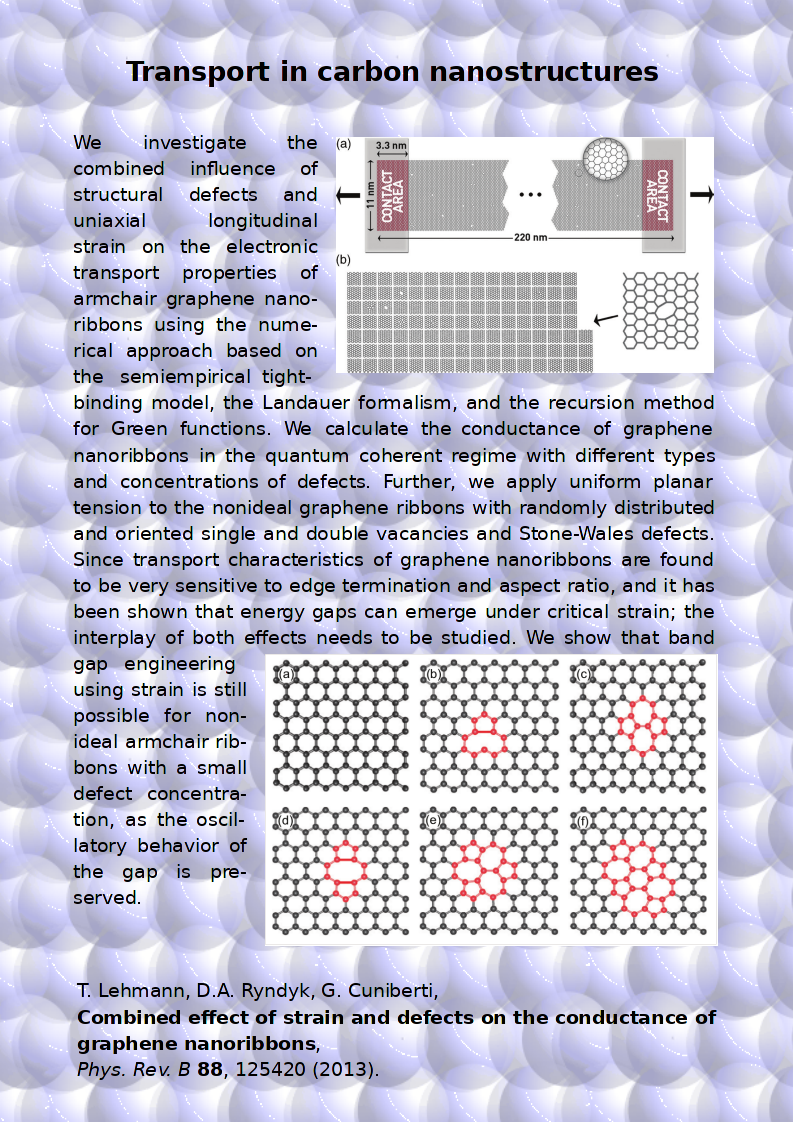
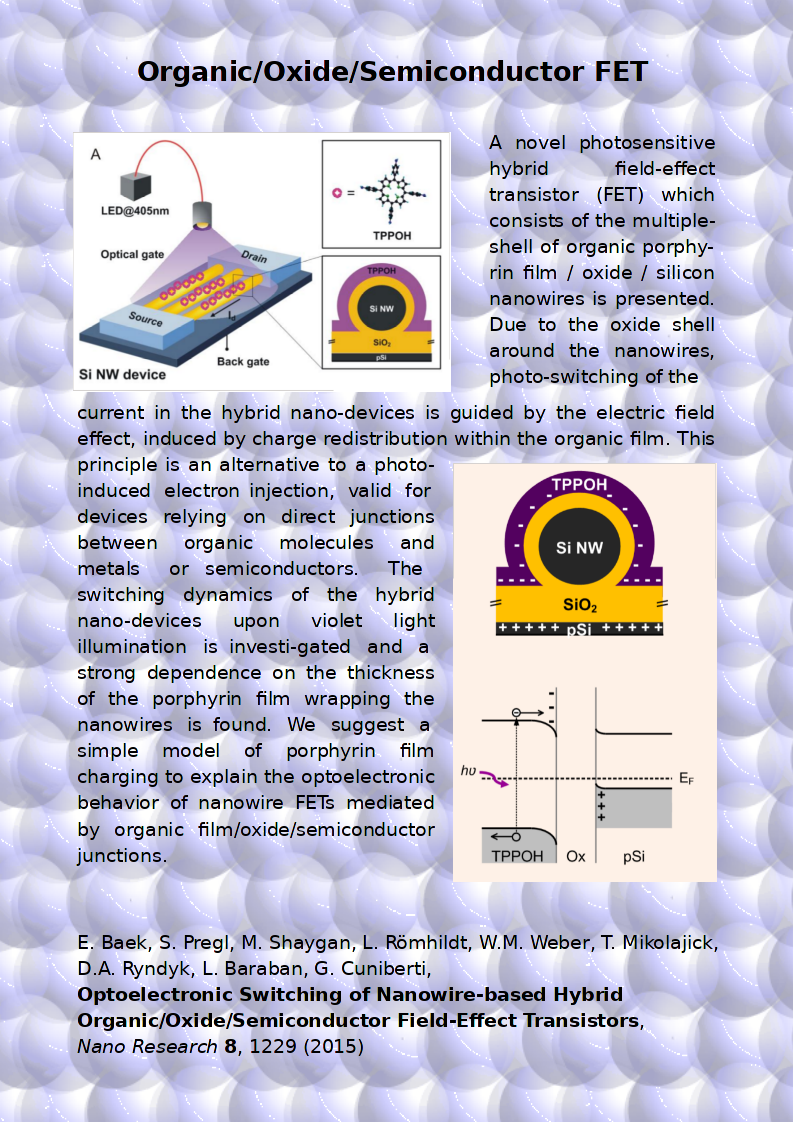
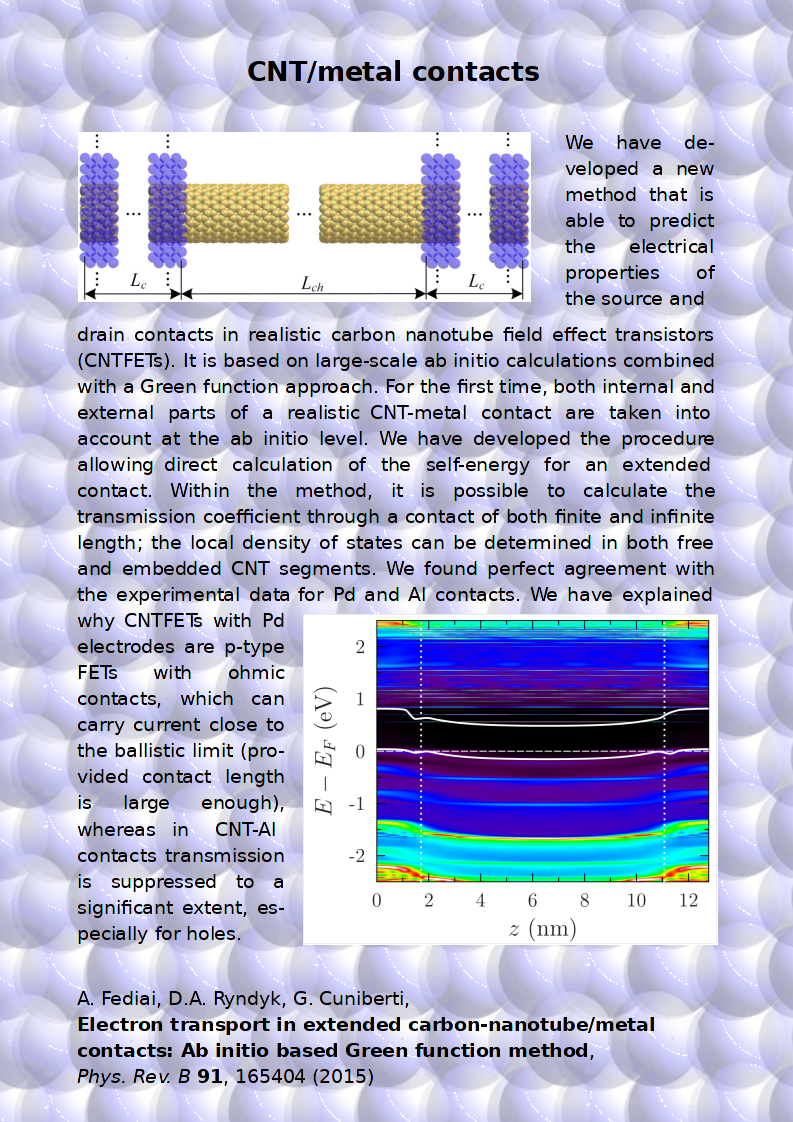
Quantum nanoscale thermoelectrics
One of the recently emerged new topics is thermoelectric properties of low-D materials and composites (for example nanocarbon/polymer mixture or metal/semiconductor superlattices). Recent calculations and first experiments showed the enhancement of the thermopower and the figure of merit for semiconductor carbon nanomaterials. Besides, combination with polymers open the way to flexible and printable elements. From the theoretical side it is important to combine the quantum transport (QT) of charge and heat at the nanoscale with the classical finite element method (FEM) approach for surrounding systems. Our aim is to provide quantitative calculations based on the multiscale QT/FEM modeling approach .
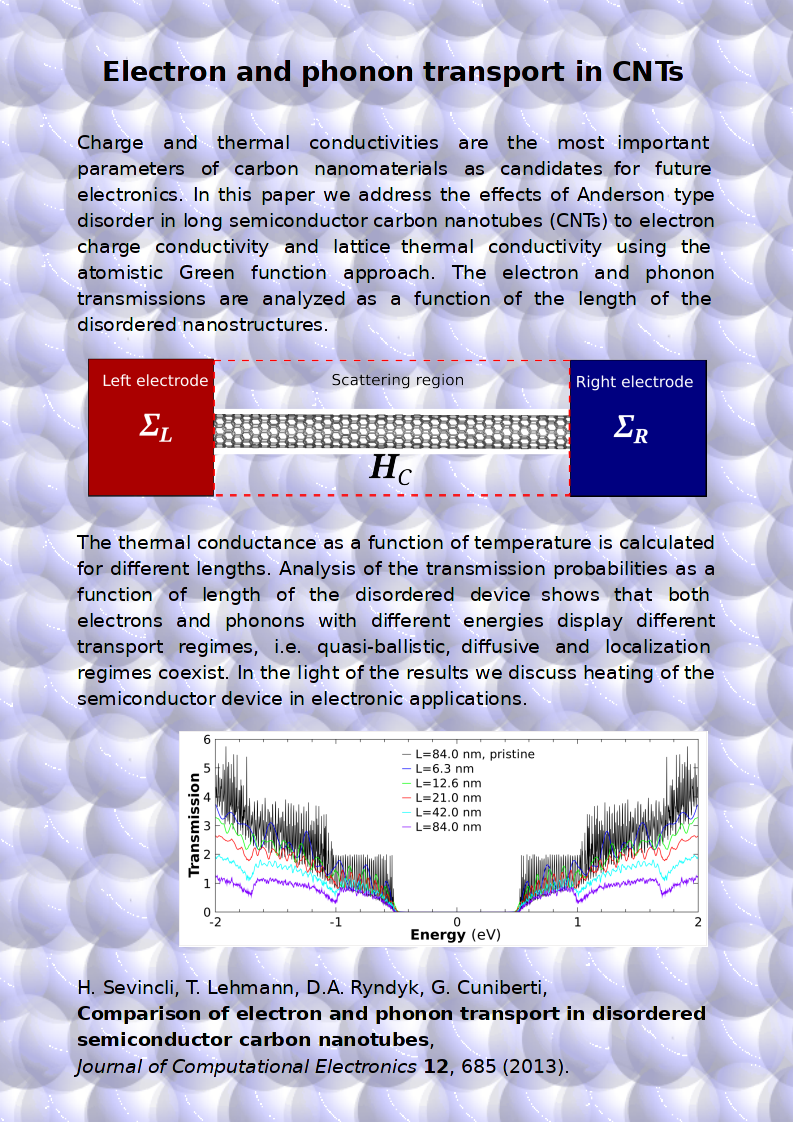
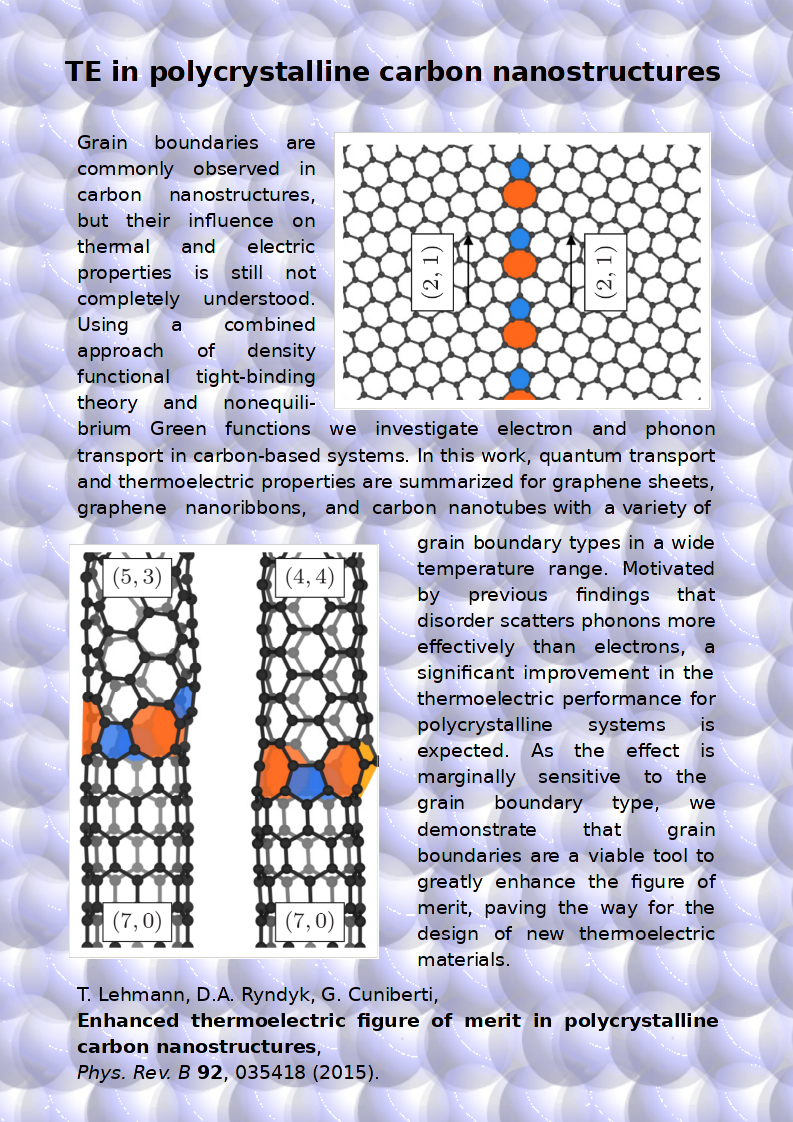
Planar (surface) molecular electronics
The development of molecular electronics during last years showed the growing importance of planar low-D molecular systems. Our focus research topic is modeling of molecular nanostructures on metal and semiconductor surfaces including ab initio based studies of the adsorption, mechanical and electronic properties of molecular wires, calculations of the on-surface diffusion and investigation of possible reaction mechanisms between molecules, especially polymerization. The electronic properties include the effects of hybridization and the charge transfer between electronic states of the molecules and the substrate, calculations of the STM images and STM spectroscopy and the electron transport along molecular wires and functional molecules combined with dangling-bond wires on passivated semiconductor surfaces.
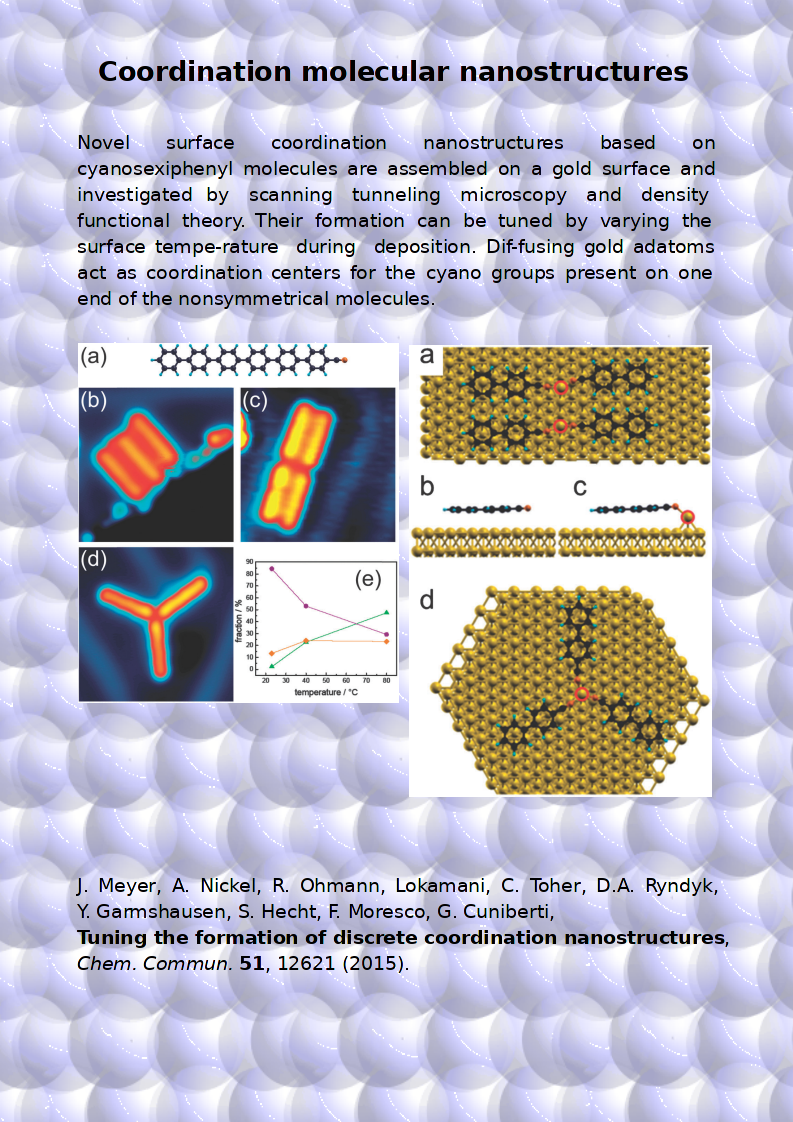
Computational platform for nanoscale modeling
Only few simple examples of above discussed problems can be solved without numerical simulations. In most cases the use of computational modeling and HPC clusters are required. We are working on the homemade general purpose quantum transport code TraNaS, which will be presented as an open-source. We also plan to incorporate TraNaS into more general project OpenNanoMod together with known atomistic code CP2K, finite-element code Elmer and some other open projects as a base for nanoscale modeling.
